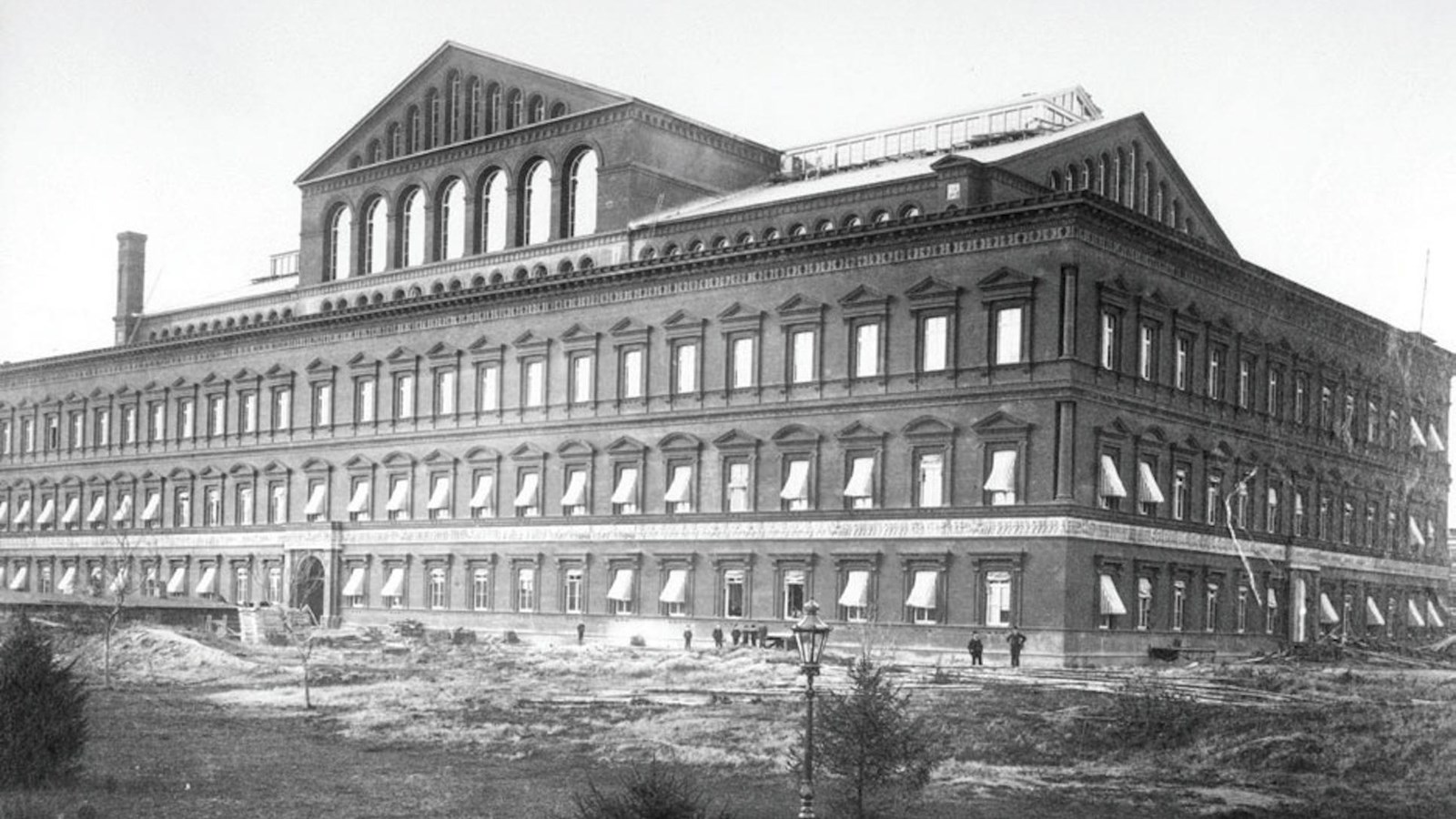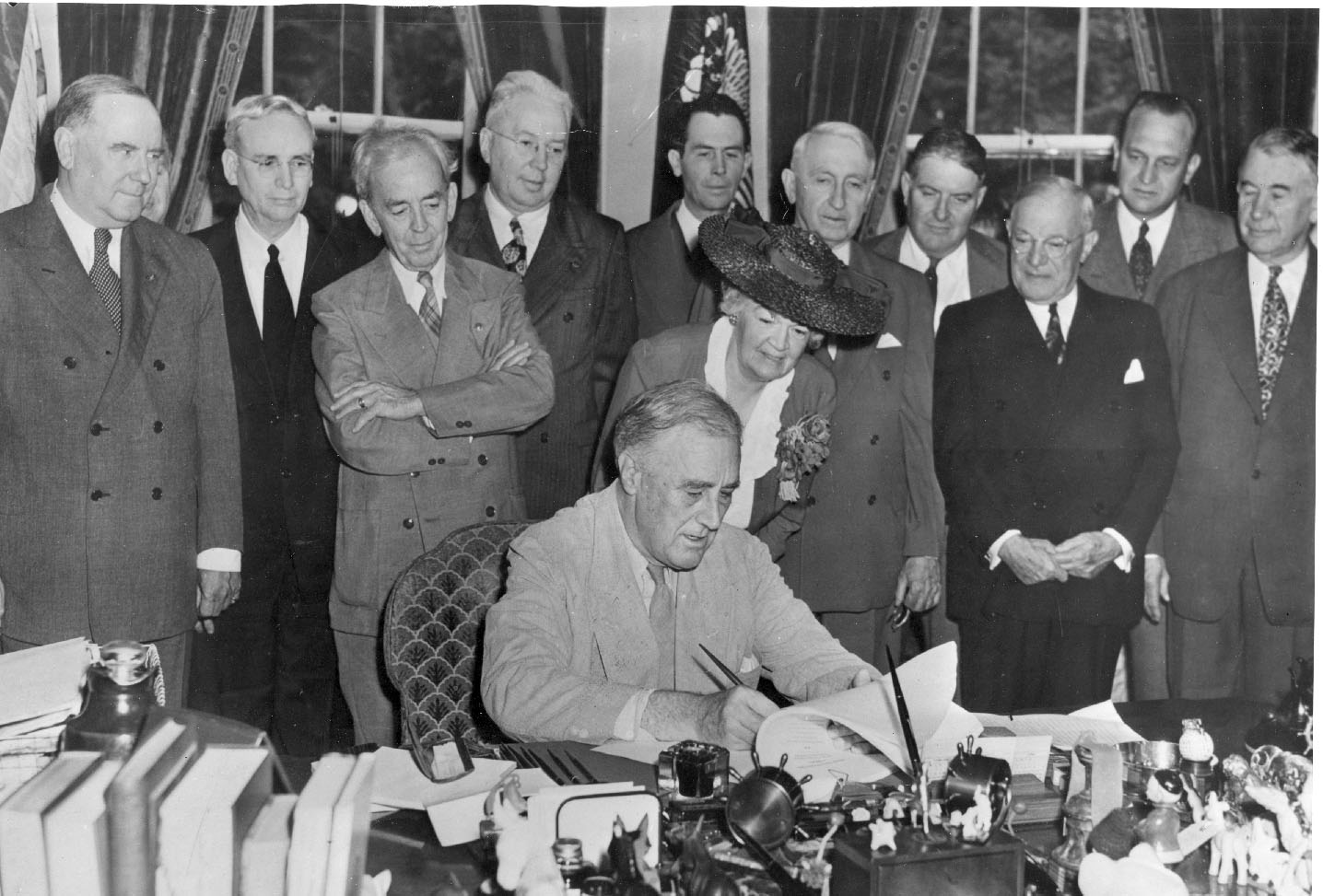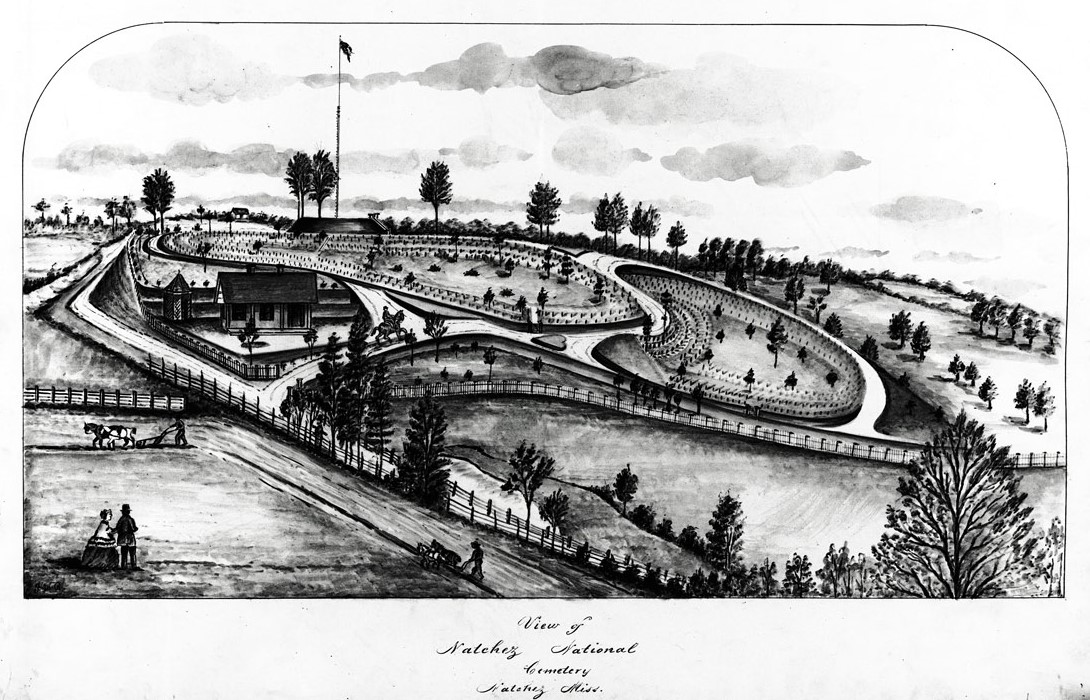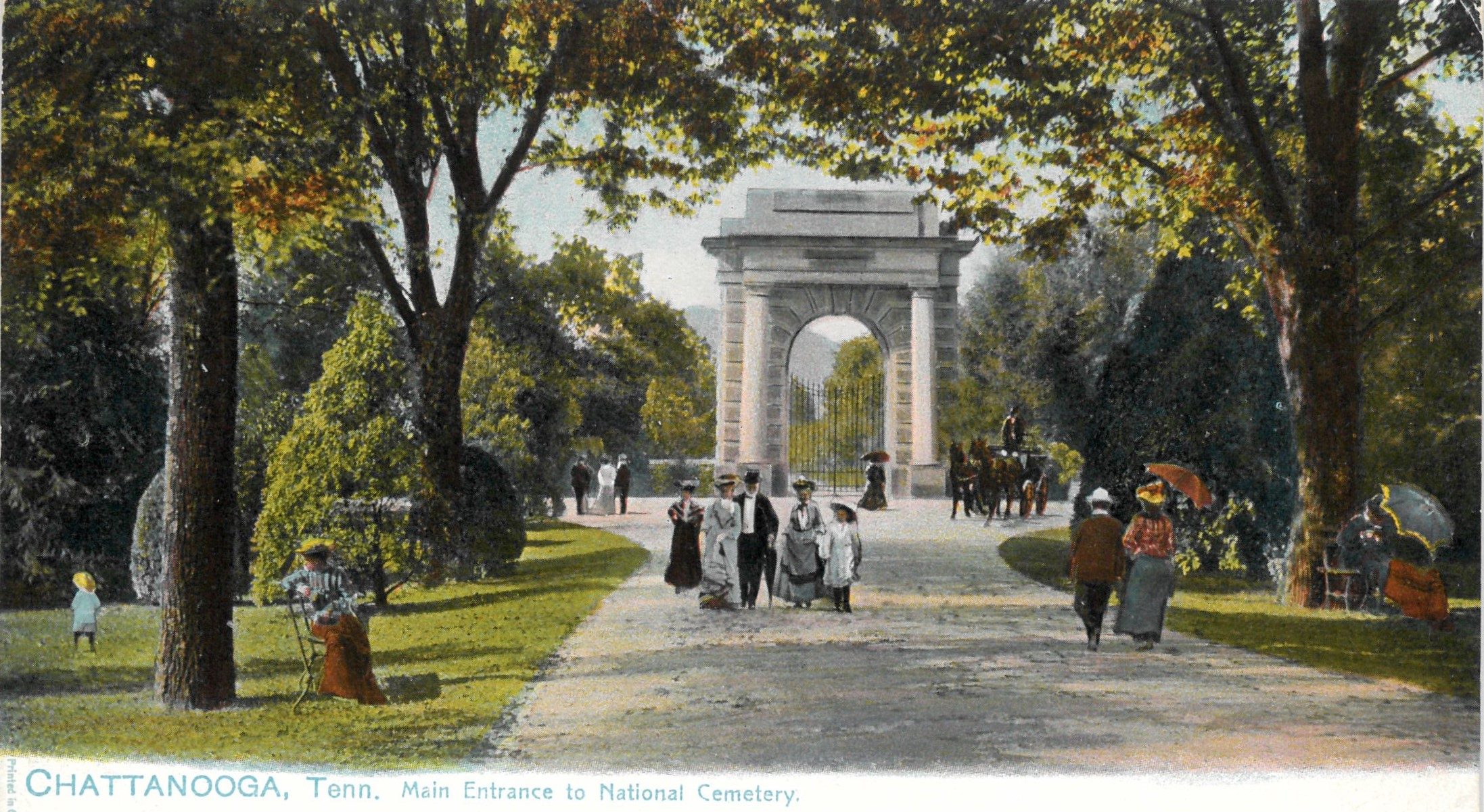
History of serving Veterans
Supporting, caring for, and honoring Veterans is woven into the fabric of the United States. From the earliest days of American history, soldiers and members of the militia were wounded in service or died, leaving widows and orphans with no financial support. Care for disabled service members and dependents fell to colonies, states, and eventually the federal government.
The services provided to Veterans affected American society and culture as much as the service rendered by Veterans. Medical innovations, vocational training for the disabled, home ownership, educational opportunities, and the establishment of national shrines for burial and memorialization are all products of the nation’s efforts to care for its Veterans. Each of these measures directly impact American life.
President Ronald Reagan signed the bill in 1988 turning the Veterans Administration into the Cabinet-level Department of Veterans Affairs, although the law did not go into effect until George H.W. Bush became president in 1989. In terms of employees and budget, VA is second only to the Department of Defense among Federal Agencies.
VA fulfills its mission today through its three component agencies: the Veterans Health Administration (VHA, est. 1946), Veterans Benefits Administration (VBA, est. 1953), and National Cemetery Administration (NCA, est. 1973). The mid- twentieth century establishment dates conceal long and complex histories.
While VA is a relatively recent addition to the ranks of executive departments, its predecessor organizations have fulfilled similar functions at the national level since the United States adopted its present form of government under the Constitution.
In the 1790s, the roots for what became VBA took shape after the War Department created a small office to administer the pensions awarded to Veterans of the Revolutionary War. The Pension Bureau became part of the newly created Department of Interior in 1849 and remained there until 1930. It oversaw disbursement of military pensions, and later civil servant retirement funds.
The predecessors for VHA and NCA arose out of the acute need for Veteran care created in the wake of the Civil War (1861-1865) and emergence of nearly two-million new Veterans. Congress granted President Abraham Lincoln the authority to purchase land to establish national cemeteries to bury Union soldiers in 1862 and formalized the large Army-run cemetery system created from that in 1867.
The huge population of disabled Union Veterans from the Civil War led to Congress creating the National Homes for Volunteer Disabled Soldiers (NHVDS) in 1865. The network of eleven regional campuses, which included cemeteries, provided comprehensive communal domiciliary and medical care for Veterans, laying the foundation for what is now VHA.
While the predecessors of each Administration were created to address needs of a specific war, they expanded to accommodate Veterans from other conflicts and periods of service.
The VA’s lineage through the 20th Century
Similarly, the modern VA system that is recognizable today evolved because of the necessities created from U.S. involvement in both World War I (1917-1918) and Word War II (1941-1945). America’s mobilization of forces in WWI led Congress to expand Veterans’ benefits—to include disability compensation, insurance, and vocational rehabilitation.
These benefits were managed by multiple offices, including the Bureau of War Risk Insurance, Federal Board of Vocational Education, and the Public Health Service.
On August 9, 1921, most of these programs were consolidated under the Veterans’ Bureau, which also decentralized the allocation of Veterans’ services making them more accessible nationwide. Medical access to Veterans was a key focus of the Bureau, and it drove construction of new clinics and hospitals throughout the country. Many hospitals offered specialized care for ailments like tuberculosis or neuropsychiatric problems.
Another round of consolidation took place when President Hoover on July 21, 1930, signed Executive Order 5398 combining the Veterans’ Bureau, NHVDS, and Pension Bureau into a single, independent federal agency, the Veterans’ Administration. General Frank T. Hines, director of the Veterans’ Bureau since 1923, led the newly formed VA until 1945.
Increased military service in this era caused a jump in the number of individuals eligible for burial in national cemeteries or a government issued headstone/marker—a benefit still overseen by the U.S. Army at the time. This forced an expansion of the National Cemetery System (NCS) into geographic regions where burial need was felt most acutely—primarily urban centers.
More than 16 million Americans served in World War II and became eligible for benefits after their discharge. The Servicemen’s Readjustment Act, more popularly known as the G.I. Bill, signed into law by President Franklin Delano Roosevelt on June 22, 1944, expanded benefits offered to Veterans even further to include education, home and business loans, and unemployment compensation. This legislation placed the Veterans’ Administration on par with the Army and Navy Departments with regards to funding and personnel.
Public Law 79-293 (The Department of Medicine and Surgery Act), signed by President Harry Truman in 1946, drove further modernization and expansion of the Veterans’ Administration medical system and partnerships with research universities. The Veterans’ Administration adapted to meet the needs of Veterans from the Cold War and the transition to an All-Volunteer Force in 1973.
That same year, the Army transferred all but two national cemeteries in the NCS to VA. In 1998, NCS was elevated to become the National Cemetery Administration, equivalent with VHA and VBA.
Since becoming the Cabinet-level Department of Veterans Affairs in 1989, VA has continued to refine the roles established by its predecessors, and take on new responsibilities, to best serve America’s Veterans.
Veterans Health Administration
The Veterans Health Administration (VHA) evolved from its origins after the Civil War to become the nation’s largest integrated healthcare network. VHA has progressed to meet Veterans’ needs and currently oversees 1,600 health care facilities including 144 VA medical centers and 1,232 outpatient sites serving 9 million Veterans every year. Today, approximately 75% of all U.S. physicians have received some of their training in VA’s hospital system.
Civil War Veterans
VHA originated from the first Federal soldiers’ facilities established for Civil War Veterans. On March 3, 1865—a month before the Civil War ended and the day before his second inauguration—President Abraham Lincoln signed a law to establish a National Soldiers and Sailors Asylum.
Renamed as the National Home for Disabled Volunteer Soldiers (NHDVS) in 1873, it was the first-ever Government institution created specifically for honorably discharged volunteer soldiers. The first national home opened November 1, 1866, in Togus, Maine.
The National Homes were often called “Soldiers’ Homes” or “Military Homes,” and only soldiers who fought for the Union Army—including U.S. Colored Troops—were eligible for admittance. These sprawling campuses were often located in rural areas and provided lifelong medical care and housing for thousands of Civil War Veterans as well as educational, occupational, and recreational programs.
Tranquil designs and features of the National Homes drew thousands of visitors, turning them into local tourist attractions. The campuses offered the public a chance to stroll the picturesque grounds, attend band concerts, theater productions, and engage with the Veterans living on campus.
The National Home model became the template for succeeding generations of federal Veterans’ hospitals and existed until the formation of the Veterans Administration in 1930, when the two entities merged.
World War I Veterans
World War I brought about the establishment of the second largest system of Veterans’ hospitals. In 1918, Congress tasked two Treasury agencies – the Bureau of War Risk Insurance and the Public Health Service – with operating hospitals specifically for returning World War I Veterans. They leased hundreds of private hospitals and began a program of building new hospitals, which were eventually transferred to the Veterans Bureau with its establishment in 1921, and later the Veterans Administration in 1930.
During this period, the Veterans Bureau focused on operating hospitals that addressed the immediate medical and rehabilitative requirements of Veterans. As medical advances grew, the focus of Veteran care shifted away from a long-term domiciliary approach to one of rehabilitation and returning Veterans to society. For the first time, hospitals became specialized in care focusing on neuropsychiatry, tuberculosis (TB), or general medicine to meet the specific needs of returning Veterans. It was also during this time that the first women Veterans were authorized for admittance to NHDVS Homes in Danville, IL, and Milwaukee, WI, and the first all-black Federal Veterans hospital opened in Tuskegee, AL.
In 1925, the Veterans Bureau established its first clinical research program and began publishing a monthly medical journal aimed at understanding and improving issues common among Veterans including TB, cancer, and mental health.
World War II and Korean War Veterans
With 16 million returning World War II Veterans, Administrator General Omar Bradley and Chief Medical Director Major General Paul Hawley transformed VA health care into a modern organization by establishing the Department of Medicine and Surgery. The Department recruited and retained top medical personnel by modifying hiring practices. The establishment of an affiliations program with America’s medical schools unlocked new possibilities in medical research and training. This era also saw the largest federal hospital construction period in history. Hospitals were built near larger population areas and closer to affiliated medical schools to reach the greatest number of Veterans possible and take advantage of teaching and research capabilities.
It was also a time of expanding medical care, as the first chief medical consultant on the medical care of women Veterans hired the first ten women doctors. In 1954, VA hospitals became fully desegregated following the desegregation of the armed forces in 1948. The VA Voluntary Service was established in 1946, to augment and complement VA’s professional health care staff and the Veterans Canteen Service was created that same year, to provide goods and services to Veterans and their families.
During this era VA’s expanded cooperative research program, aided by newly formed connections to medical schools, entered a “golden age of VA research” resulting in groundbreaking discoveries about cancer, suicide, hypertension, mental health, nuclear medicine, spinal cord injury, and tuberculosis. VA innovations like the cardiac pacemaker and CT scanner not only benefited Veterans but the whole world.
Vietnam and Gulf War Veterans
Despite challenges and budget cuts in the post-Vietnam era, VA again adapted to meet the needs of Veterans. In 1978, VA began offering special access to medical care, including physical exams, to Vietnam Veterans exposed to Agent Orange as advocates strove for decades to widen presumption and eligibility standards. In 1979, VA launched Operation Outreach to establish community-based Vet Centers providing readily accessible mental health and readjustment counseling services to Veterans who were distrustful of VA hospitals. The National Center for Post Traumatic Stress Disorder (PTSD) was created in 1989 within VA to address the mental health needs of Veterans and other trauma survivors.
VA research saw some of its highest achievements as Dr. Rosalyn Yalow and Dr. Andrew Schally received the Nobel Prize in Medicine for their work in developing radioimmunoassay of peptide hormones in 1977. The 1980s saw increased eligibility for women Veterans leading to the establishment of an office to address women’s health issues (now known as Office of Women’s Health).
Beginning in 1995, the Gulf War Era Cohort Study launched the largest and longest-running study of Gulf War Veterans, with a health survey of 15,000 Gulf War Veterans and 15,000 Gulf War Era Veterans.
Formally designated as the Veterans Health Administration in 1991, health care administration became decentralized into 22 Veteran Integrated Service Networks, or VISNs, emboldening the field to make care easier to achieve.
Post 9/11 Veteran Care and Today
Today, VHA – the largest of the three administrations that comprise VA – continues to accommodate a diverse Veterans population’s changing medical, surgical, and quality-of-life needs. New programs provide treatment for traumatic brain injuries, post-traumatic stress, suicide prevention, women Veterans, homeless Veterans, and more. VA has opened outpatient clinics, established telemedicine and other services, and cultivates groundbreaking new medical research.
For the full history, check out the timeline of VA health care.
Veteran Benefits Administration
The origins of the Veterans Benefits Administration (VBA) date back to the country’s earliest days. During the American Revolution, the Continental Congress passed the first national pension laws for wounded or injured soldiers but left it to the states to distribute relief.
After 1789, the federal government assumed responsibility for the pension system. In the early 1800s, a small office of three in the War Department handled the clerical work relating to claims and the few thousand Veterans on the pension rolls. As the number of beneficiaries increased over the decades, so did the size of the workforce.
By the mid-1830s, the Bureau of Pensions, as the office came to be called, employed a staff of 18 dispensing $2-3 million in payments annually to some 40,000 Veterans, widows, and dependent children. Clerks in the Washington, D.C. office reported to the Commissioner of Pensions, a presidentially appointed position created by Congress in 1833.
Another Congressional Act in 1849 transferred the Pension Bureau to the newly created Department of the Interior, where it would remain until 1930.
The pension system grew dramatically after the Civil War. For the first time, the federal government regarded diseases contracted during military service as grounds for claiming disability. From 1863 to 1888, the Pension Bureau received on average 40,000 applications a year from Union Veterans or their survivors.
An 1890 law expanded eligibility even further by granting pensions to any Union Veteran too infirm to work. Within a decade, pension numbers more than tripled, from 303,000 in 1883 to 966,000 in 1893.
Spending on pensions also soared and routinely consumed more than 30 percent of the federal budget in the 1890s. (These payments only ceased when the last Civil War beneficiary, the daughter of a Union soldier, died in 2020 at age 90). By this time, the bureau had grown so large that Congress funded construction of a new building to house the 2,000 men and women who worked in the capital.
The massive Italian Renaissance Revival-style structure occupied a full city block and would serve as the Pension Bureau’s headquarters from 1885 to 1926. In addition to the Washington, D.C. workforce, the bureau employed another 400 persons at 18 pension agencies in cities across the country.
During World War I, the federal government introduced two new types of Veterans benefits: insurance and vocational training for the disabled. These programs were first handled by separate organizations until Congress in 1921 centralized their management in the Veterans Bureau.
Meanwhile, the Bureau of Pensions continued to administer the pension system for Veterans of previous wars. In 1930, Congress decided to consolidate all Veterans benefits and services in a single federal agency, the Veterans Administration.
The Veterans Administration faced unprecedented challenges after World War II. Millions of returning Service members sought to collect on the benefits they were eligible for, including the education and loan assistance offered by the 1944 GI Bill.
The volume of business was staggering. In the first five months following the war, VA processed 1.5 million disability claims alone. By the time the provisions of the WWII GI Bill had expired, the agency had helped more than 12 million Veterans advance their education or secure low-interest home loans.
To increase efficiency and better manage its workload, VA carried out an internal reorganization in 1953 that led to the establishment of the Department of Veterans Benefits, the direct forerunner of the Veterans Benefits Administration.
The department was responsible for overseeing all types of benefits except for insurance. In 1989, the restructuring that accompanied the creation of the Department of Veterans Affairs united insurance with the other major benefit programs managed by VBA.
From its humble beginnings in the Revolutionary era, the Veterans Benefits Administration has grown into a dynamic organization employing more than 24,000 people in its Washington, D.C. headquarters office, and at 56 regional offices. VBA now distributes almost $135 billion in benefits and services annually to nearly 6 million Veterans and their family members.
VBA also continues to evolve. In the last decade, it has made great strides in digitizing records, automating processes, and implementing other modernization initiatives to improve delivery of benefits to the Veteran community.
National Cemetery Administration
The National Cemetery Administration (NCA) is one of three federal agencies responsible for managing national cemeteries in the United States. Its mission includes the oversight of most national cemeteries and the provision of grave markers for qualified Veterans. The origin of all national cemeteries begins with the Civil War (1861-1865) and President Abraham Lincoln.
In the war’s second year, on July 17, 1862, Congress enacted legislation that authorized Lincoln “to purchase cemetery grounds…to be used as a national cemetery for the soldiers who shall die in the service of the country.” After the war, the National Cemetery Act of February 22, 1867, was the first law to finance and develop national cemeteries through the acquisition of land, buildings, walls, and permanent upright marble headstones.
When the Union dead reburial program concluded in 1871, the Army reported that 300,000 remains were reinterred in 73 national cemeteries or in soldiers’ lots located within private cemeteries. This was the first time a country gathered its dead in Veterans’ cemeteries created to honor their service. While burials in the first national cemeteries were only for Veterans who died in the Civil War, burial criteria have expanded dramatically in the areas of family eligibility and military service over the years.
The 1930s saw major changes associated with national cemeteries. Established 1930, VA assumed responsibility for the National Homes for Disabled Volunteer Soldiers, whose burial grounds would become national cemeteries.
Flat grave markers were introduced. Seven new cemeteries were built between 1934 and 1939 in major cities based on Veteran demographics. The Army transferred 14 Civil War national cemeteries to what is now the National Park Service.
The National Cemeteries Act of 1973 (PL 93-43) was enacted on June 18, 1973, transferring stewardship of the 112-year-old National Cemetery System from the Army to VA: 82 national cemeteries and 33 soldiers lots.
The Army retained Arlington National Cemetery and Soldiers’ & Sailor’s Home National Cemetery. Concurrently, VA re-designated its 21 burial grounds to create a network of 103 national cemeteries. The act also transferred responsibility for the provision of government-issued Veteran headstones/markers to VA.
VA began opening new national cemeteries in the 1970s, and in 1978, the Veterans Cemetery Grants Program was established to assist states, territories and federally recognized tribal governments provide gravesites where VA cemeteries are not located.
On November 11, 1998, the Veterans Programs Enhancement Act of 1998 renamed the National Cemetery System as the National Cemetery Administration, and the NCA principal was elevated from Director to Under Secretary of Veterans Affairs for Memorial Affairs.
NCA opened 17 new cemeteries between 1997 and 2010, and it has continued to introduce memorial products to honor Veterans’ service. VA provides a headstone/marker/medallion, U.S. flag, and Presidential Memorial Certificate. About 15 percent of all eligible servicemembers are interred in a VA national cemetery; about 5 percent opt for a State, Territorial or Tribal Veterans Cemetery.
The NCA system is composed of more than 150 national cemeteries and soldiers’ lots, and it is the only federal agency developing new Veteran cemeteries. These memorial landscapes convey meaningful stories about the diversity of American history – patriotic and partisan service, racial and gender equality, religious beliefs, and ranks from private to fleet admiral.
VA cemeteries contain more than 400 recipients of the Medal of Honor, and approximately 1,370 memorial monuments. Nearly 4.9 million individuals, including Veterans of every conflict from the Revolutionary War to the Global War on Terror, are honored by burial in VA national cemeteries.



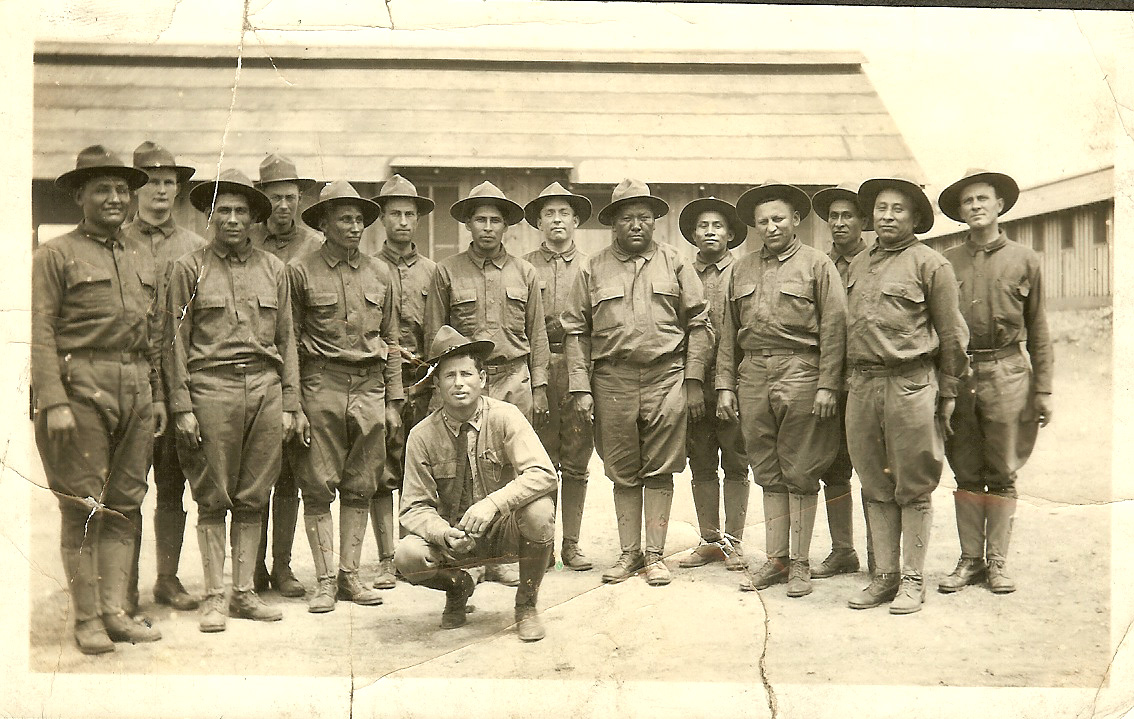
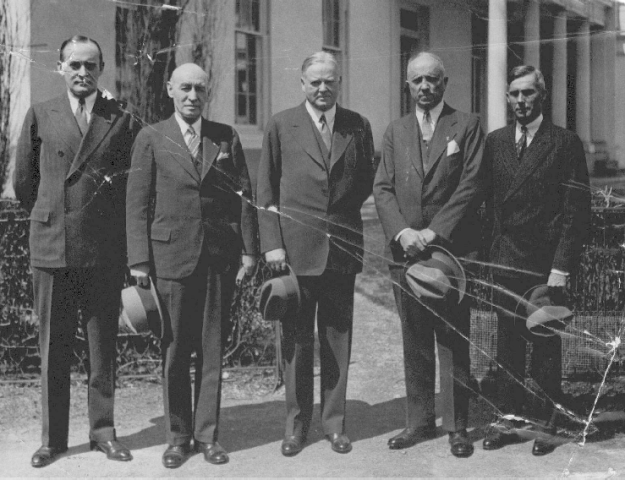
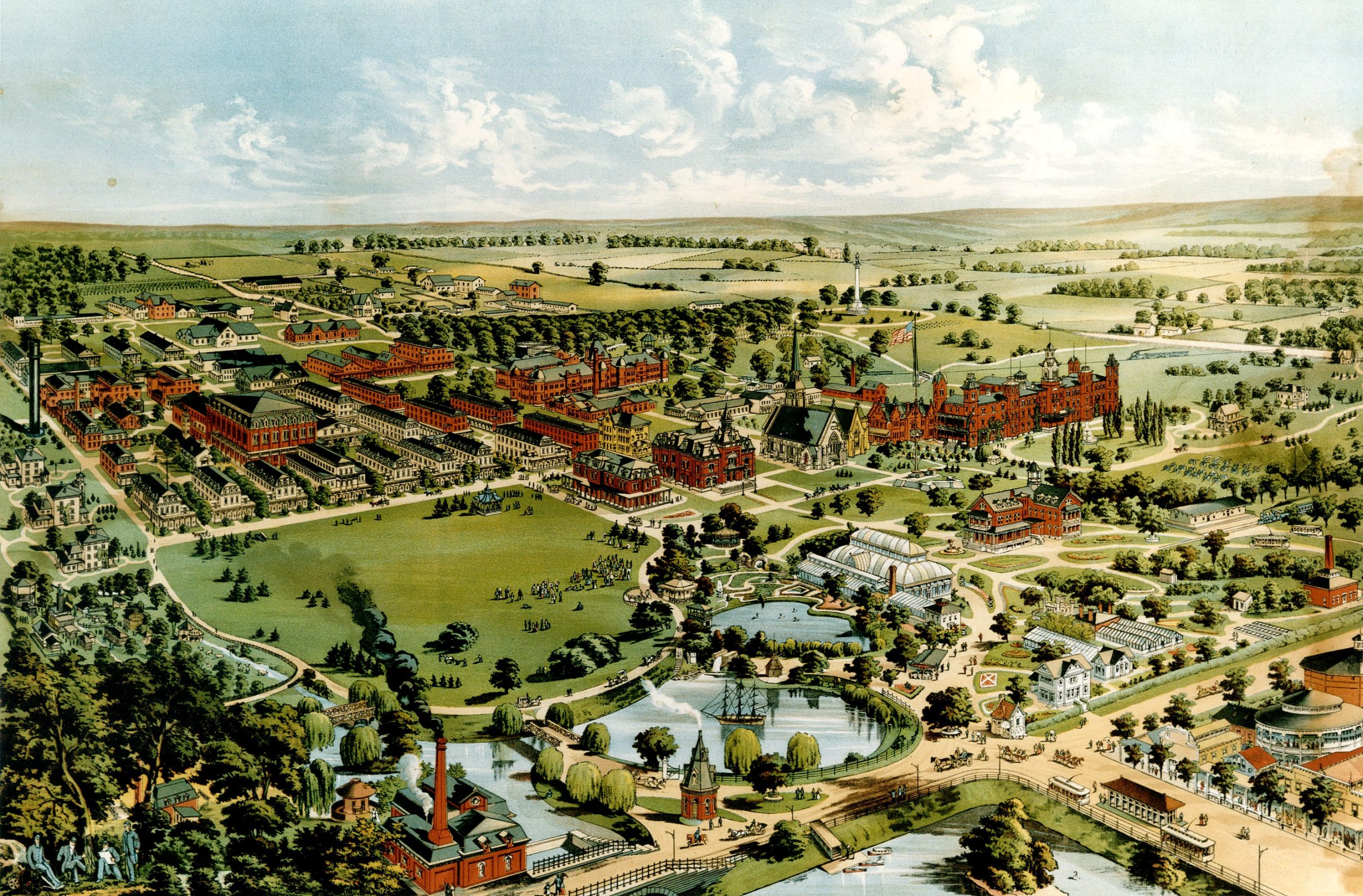
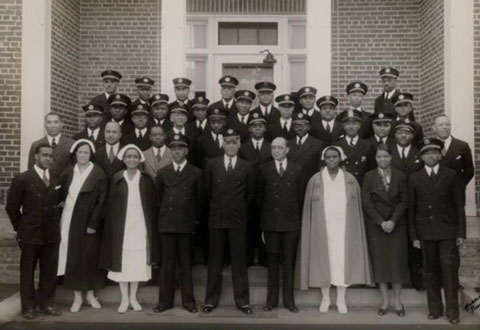
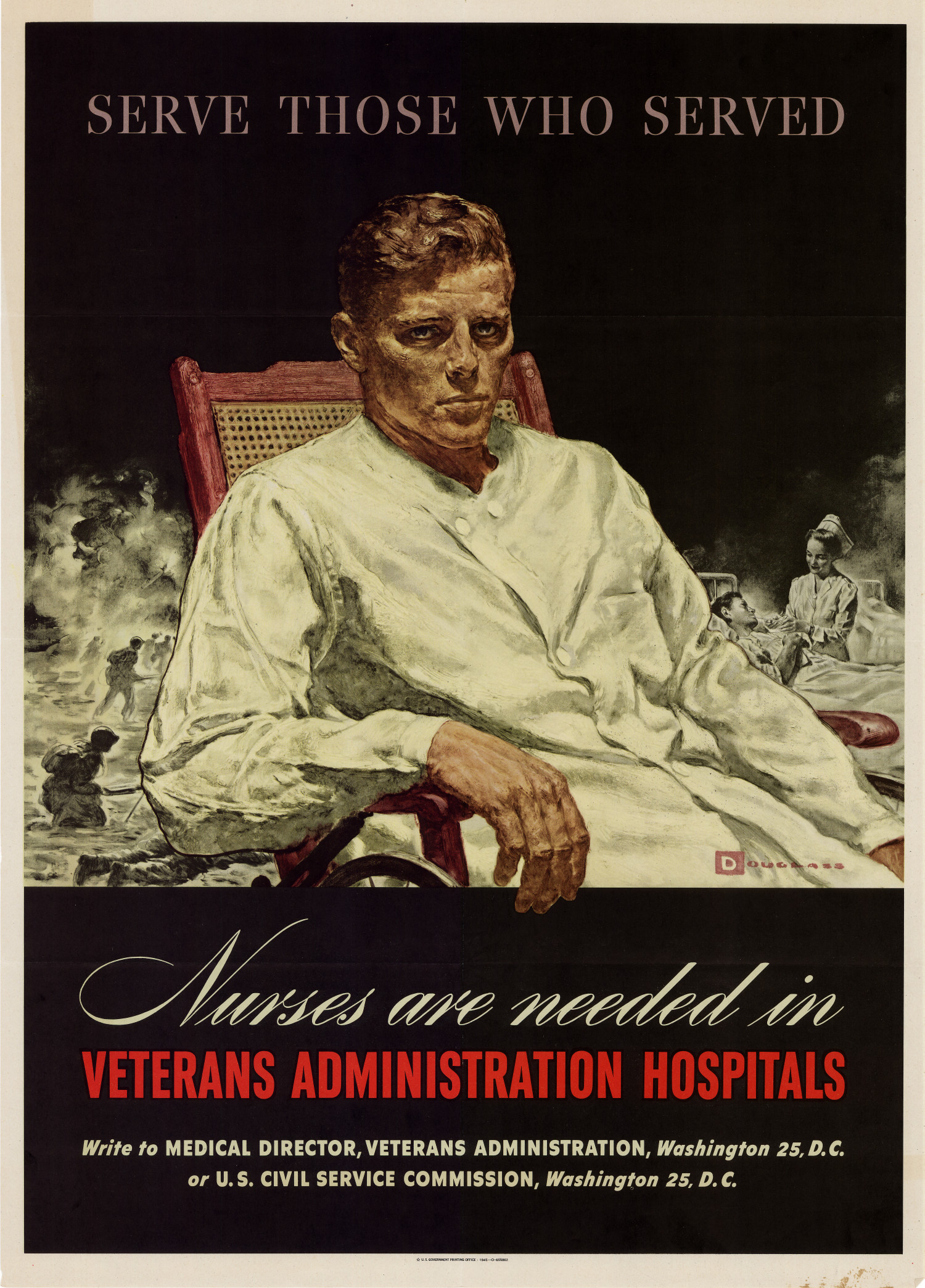
![VA director Max Cleland gives the camera a celebratory thumbs-up at the opening of the new Vet Center in Atlanta, Georgia, in 1980. The launching of the Vet Center program capped a 10-year effort by Cleland to secure readily accessible readjustment counseling for Vietnam Veterans like himself. (ajc.com]](https://department.va.gov/history/wp-content/uploads/sites/10/2024/02/070o-Cleland-Atlanta-Vet-Center.jpg)

